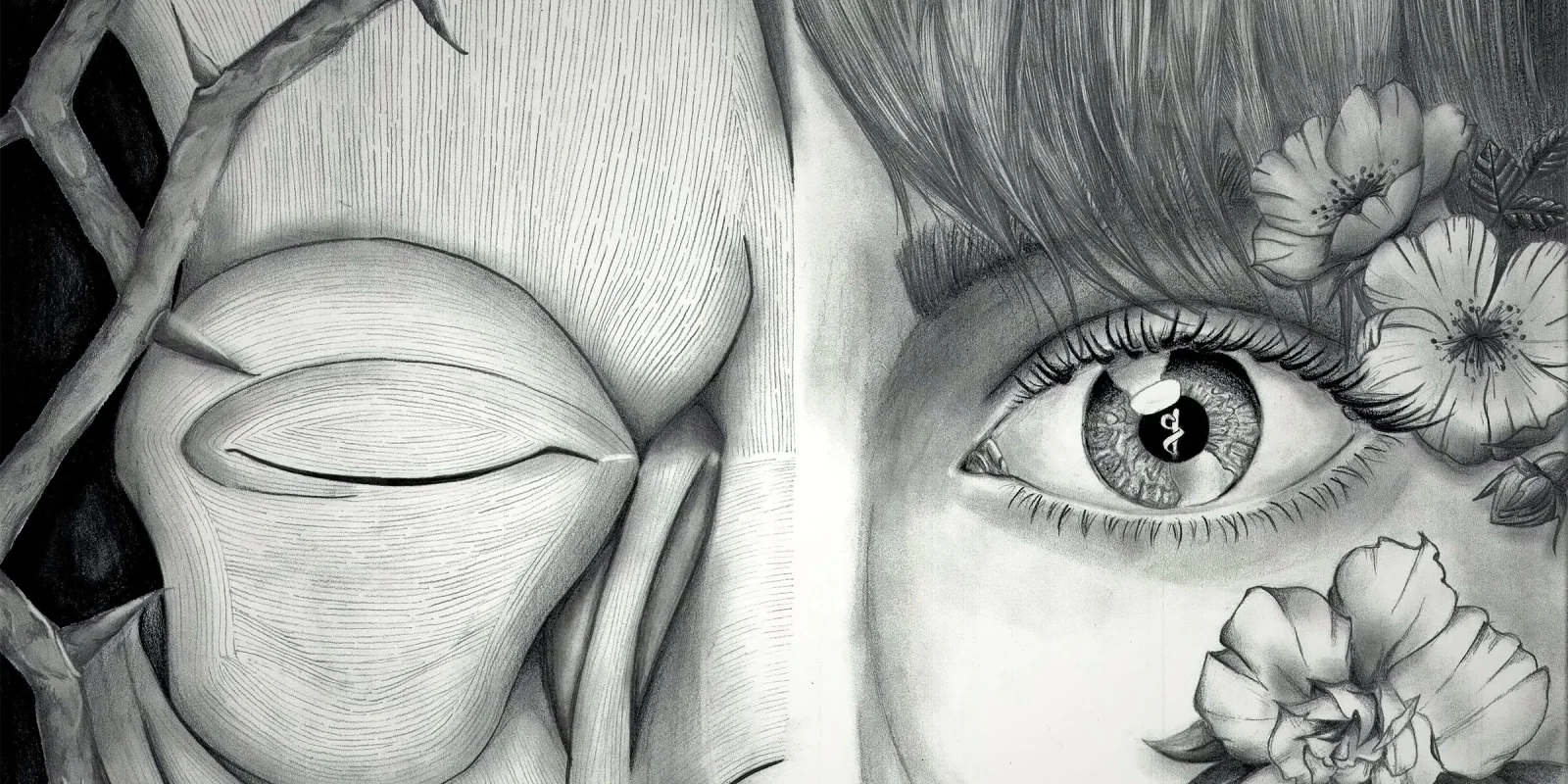This is part of the Medical Humanities Series on Op-Med, which showcases creative work by our members. Do you have a poem, short story, creative nonfiction or visual art piece related to medicine that you’d like to share with the community? Send it to us here.
What was your inspiration? Did other creative works, if any, influence your creation of this piece?
In my second year of medical school, I drew a piece focused on the human eye; at the center of the pupil was the Staff of Asclepius and the iris was a globe. The idea behind that drawing was to "view the world through the lens of medicine;" but it felt incomplete. What happened when you did so? What was its significance? That solitary eye did not answer these questions.
Now, in the midst of the COVID-19 pandemic, the unprecedented politicization of simple public health measures like hand-washing and wearing a mask has made it clear what happens when you do — and don’t — filter the world through medicine. I was inspired to revisit that eye, and to expand its original vision.
Medicine is like a rosebush, with its fair share of thorns that often must be overcome before you reach the flowers of health at the end. While some people focus on the flowers, others, however, choose to focus on the thorns. As they see the impact of these thorns on their normalcy and freedoms, they decide to willfully close their eyes to the warnings of science. Unfortunately, in the midst of a raging pandemic, that willful ignorance can result in death.
We cannot overcome this pandemic unless we unite, and together, as one nation, open both of our eyes.
Why did you choose this medium? What interests you about it?
A majority of my illustrations are in graphite. Not only is this a simple and forgiving medium to create with, but I think that for this piece in particular, the black and white gradient provides a stark and foreboding contrast between the two views of science.
How long have you been doing this activity? What got you started?
I am a self-taught artist. I have loved to draw since I was a child, and during college I developed an interest in attempting semi-realistic portraits. Since then, I have focused on learning the art of portraying humanity. In medical school, one of the classes we take during our first and second years is called "Layers of Medicine." This course centers on medical humanities, ethics, and socio-cultural complexities. One of the final projects for the class is to create an art piece, and the humanoid robot I drew to portray physician burnout for my final during my first semester of medical school went on to tour the country as part of the National Academy of Medicine’s art gallery on physician well-being. I came to realize that art was not just a hobby, but a means by which to give a powerful voice to my journey in medicine.
Shreya is a rising fourth year medical student at the University of Utah School of Medicine. She currently serves as a student research fellow in Geriatric Dermatology at UCSF.







